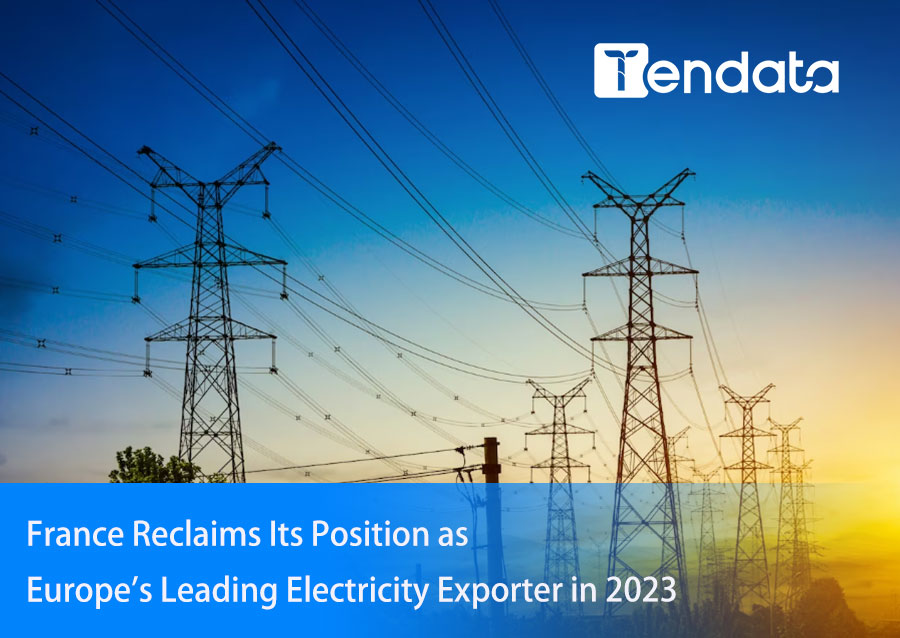 Trade Trends News
Trade Trends News
 18-01-2024
18-01-2024

With 50.1 TWh of net electricity exports to its European neighbors in 2023, France has regained its position as Sweden's leading exporter.
Figures released on Wednesday, January 17, show that France will regain its position as Europe's leading electricity exporter in 2023, well ahead of Sweden and Norway, thanks to an increase in the amount of nuclear power in 2022, which was affected by a historic drop in production. Courtesy of analyst firm S&P Global Commodity Insights.
France will export a net 50.1 terawatt-hours of electricity to its European neighbors in 2023, thus regaining its position as the leading exporter, which was held by Sweden in 2022, according to data revealed by the Echo on Tuesday.
In 2023, Sweden and Norway, two countries that regularly rank among the leaders thanks to their abundant hydroelectricity, realize net exports of 28.6 TWh and 17.3 TWh, respectively. Spain, which relies on solar and wind energy, ranks fourth with net exports of 13.9 TWh.
As a result of corrosion problems detected in several nuclear reactors at the end of 2021, France found itself in an unprecedented situation in 2022, where it was a net importer of electricity for almost the entire year, something that had not happened in forty-two years.
Since then, nuclear and hydroelectric power, led by the historic operator EDF, has been restored. With the reactors restarted, EDF's nuclear generation increased from 279 TWh in 2022 to 320.4 TWh in 2023, the lowest level on record since 1988. Against this backdrop, France has set a new record for "electricity" exports.
High-voltage network management company RTE said on January 3, 2019, that France "set a new maximum export balance of 20.3 GW", thus breaking the export records of February 2019 (17.4 GW) and December 2023 (18.7 GW).
German Electricity Exports Decline
In the case of Germany, its net imports will reach 10 TWh by 2023 for the first time since 2002. The reasons given for this are varied.
For Emeric de Vigan, Kpler's vice president for the electricity market, the situation can be explained by the abandonment of the country's last three nuclear power plants, which accounted for 6% of Germany's electricity generation. He commented to AFP that "the absence of wind farms is enough to create some tension once they lack wind".
For other experts, the decline in German electricity exports is largely a matter of price. Germany used to supply cheap coal-fired power in large quantities to its neighbors, but now coal power is more expensive due to higher CO 2 pricing.
Category
Leave Message for Demo Request or Questions


 T-info
T-info T-discovery
T-discovery

 My
Tendata
My
Tendata Market Analysis
Market Analysis Customer
Development
Customer
Development Competitor
Monitoring
Competitor
Monitoring Customer Relationship
Customer Relationship





































































































































